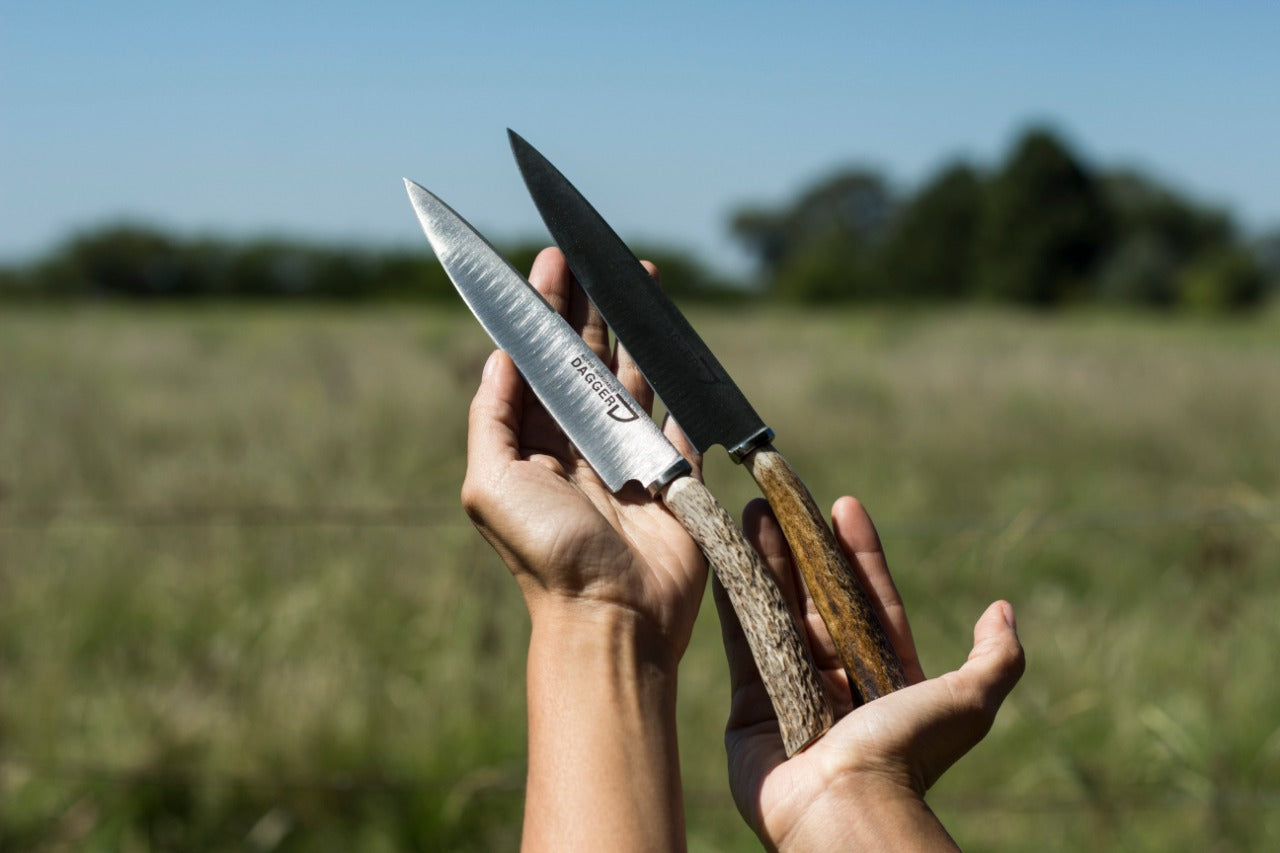Deer antlers are beautiful and naturally elegant, and they also have multiple uses, for the animals and as decorations in the homes or to make objects for domestic use and weapons in antiquity.

At the beginning of the last century a number of animal species were introduced in the Argentine Patagonia such as salmon, wild boar, and red deer. The latter came to the province of La Pampa from Europe around 1900 and a few decades later, to the area of the Andes mountain range.
During the end of the summer and the beginning of the Patagonian autumn, you can observe a natural spectacle called “brama” or “berreo”, roaring or bellowing. The stags display all their courting skills at dawn or dusk, bellowing to mark their territory and protect their deer harem. Additionally, during brama the stags fight one another fiercely to demonstrate leadership, and the antlers are their main weapons.
The beginning of spring is when the stags shed their antlers. This is a phenomenon that all cervids go through: their horns drop off to allow new ones to grow, larger and stronger ones.
During the period when stags don’t have horns, they feel more vulnerable. This is why they usually look for refuge in woods and are more difficult to observe. If the stag is young (under two years) it is normal that they only grow antlers without points. The following year they will already develop antlers with more points. Growth is slow, they take between 12 and 18 weeks to grow, and reach their maximum size when the stag is between seven and eight years old.

The antlers that drop are used in part by the female deer for food; they need the calcium in the final part of their gestating period. On the other hand, they are also used to make household objects because of their outstanding properties. In fact, the horns are of a very strong material, and the hardness depends in part on what their diet has been.
The history of objects made with antlers that have been shed goes back to the upper Paleolithic, when man used them to make harpoons, axe handles, canes, etc. And since then they have also been used habitually to create kitchen utensils and other domestic utensils.
The Vakiano artisans, as part of a culture to strengthen the unity with nature and underline their autochthonous identity, also make objects with horns of Patagonian horns.
The hardness of this material is similar to such hardwood varieties as oak, cherry wood and maple. Thus common artisanal hand tools can cut the horn without damaging it.
Agustín Berruti, one of our artisans, tells us about how he proceeds in crafting this material. After he cuts the antlers to the desired size for each product, he shapes it with coarse sandpaper, using a bench grinding wheel. With that same machine, and using sandpaper with a progressively finer grain, the lines that are part of the horn are removed until is it smooth to the touch. Then it is polished with cloths and pastes to make it shine. Once this process has been completed for knives, the hilt is attached to the blade, and the alpaca is finished.
Look at the suggested objects made of deer antlers here.






![Air gun 101: The differences between .177 & .22 – Which jobs they do best ? [Infographic]](https://airgunmaniac.com/wp-content/uploads/2020/09/g44-218x150.jpg)








































